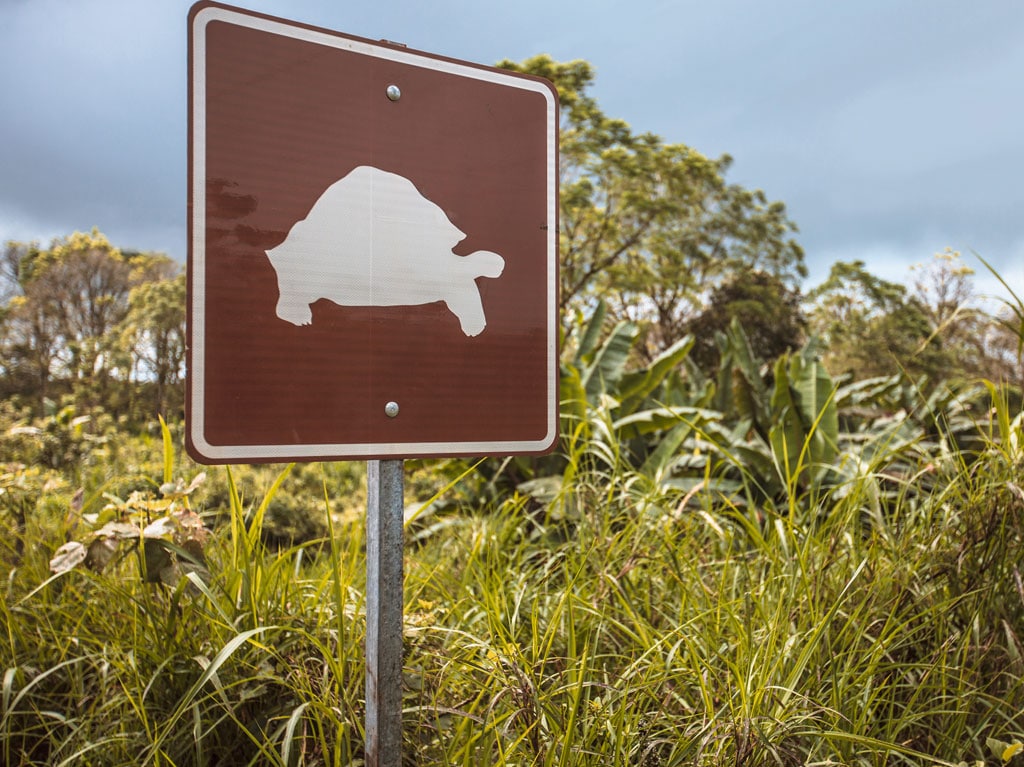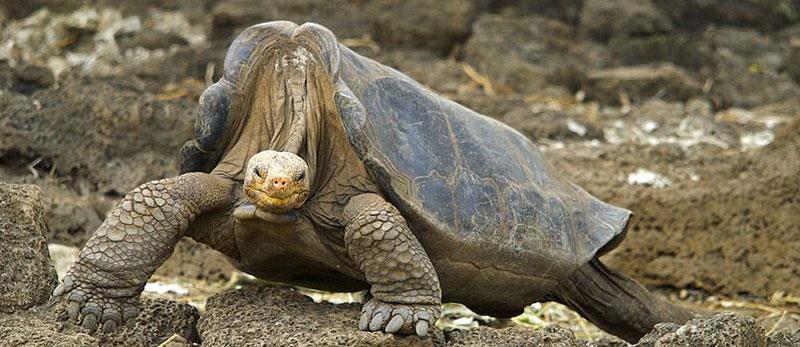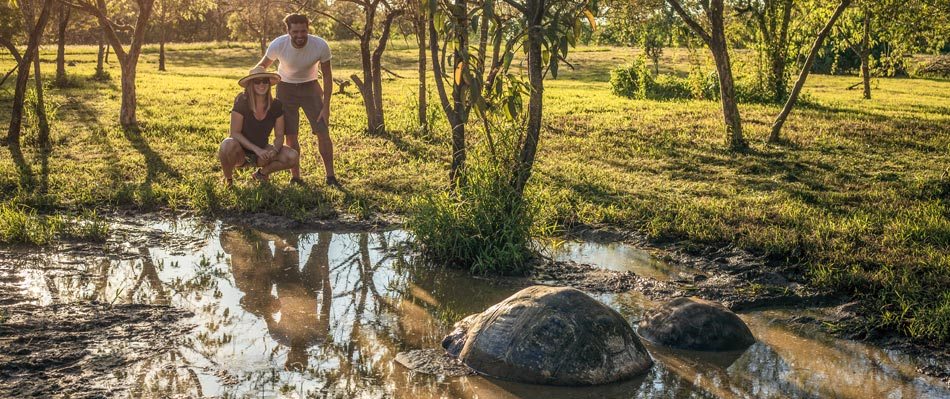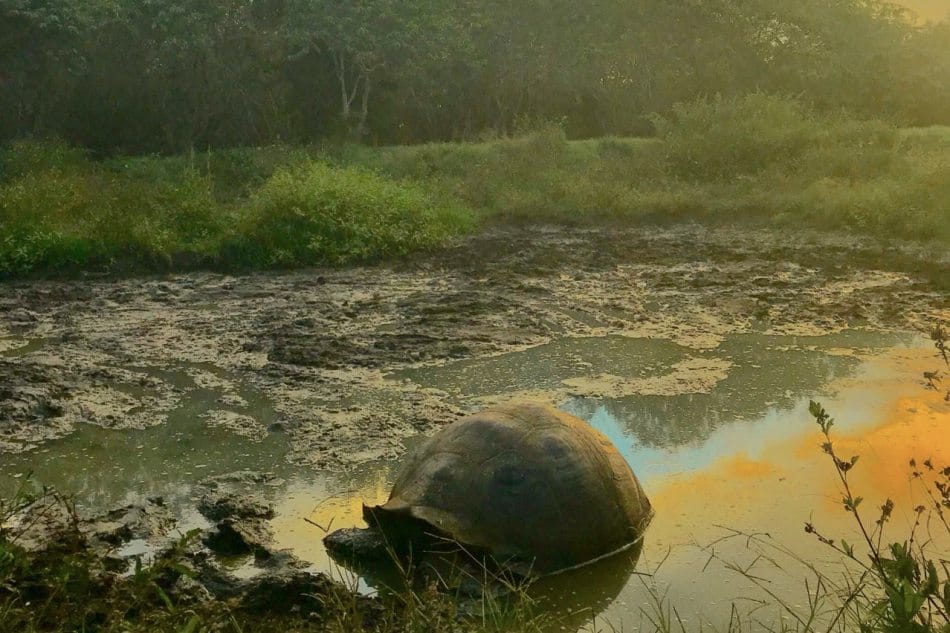The Galapagos Giant Tortoise

On arriving in the Galapagos Islands, you’ll immediately notice shiny, rock-like shapes amidst the lush greenery. These are not stones but the shells of giant tortoises, the ancient inhabitants and namesakes of the islands. ‘Galapagos’ is an old Spanish word for tortoise, reflecting their enduring legacy in this unique ecosystem.
Lonesome George

The most famous of these magnificent reptiles – indeed the most famous tortoise the world has ever known – was Lonesome George. A poster boy for conservation throughout the planet until his death in June 2012, George was the last member of the La Pinta giant Galapagos tortoise subspecies. His passing not only represented the extinction of an incredible creature, but a personal loss to the many who had cared for him and who had come to see him as a global symbol of conservation.
The Decline of the Giant Tortoise
Some 300,000 giant tortoises once steadily roamed the islands, but throughout the course of the 400 years since they were discovered by Bishop Tomás de Berlanga, tens of thousands were slaughtered to be eaten by starving pirates and sailors; their shells were travelers’ trophies. And if man wasn’t murdering them he was endangering them in other ways: bringing introduced species like rats, goats, and pigs and wrecking their habitats.
In the 1950s, when the Galapagos Islands were declared a national park, huge efforts began to rescue native species and destroy introduced ones, to reclaim the fragile natural balance. Much of the money you spend during your Galapagos Islands vacation goes into this arduous restoration work.
The Charles Darwin Research Station
During the latter part of his life, George was cared for like a living relic in an isolated pen at the Charles Darwin Research Station, Santa Cruz – you can visit the station and its tortoise breeding program today on your Galapagos Islands vacation. His carers and conservationists were desperate for the centenarian tortoise to do one thing: reproduce with genetically-similar females to safeguard his gene pool.
Breeding efforts
Lewd tales abound of the ways in which his carers tried to coax him into ‘action’ but his shy approach to women was almost as legendary as his solitude. His pen, which he shared with two females, had a heart-shaped pool, in which Galapagos rangers hoped he would produce an heir. A $10,000 reward was even offered for tracking down a Pinta Island female. But George could not be tempted for love nor money.
One moment the frustrated lothario looked close: after residing with a female tortoise from Isabela island’s Wolf volcano, George did mate, but the eggs never hatched.
Mourning Lonesome George
His failure to reproduce, therefore rendering his subspecies extinct, was one reason for the heavy sadness that swept the islands when George was found dead in 2012. But for many, the loss was much more personal – the New York Times reported that some of the National Park staff wept as if it were their own grandfather who had died.
Fausto Llerena
The person who George’s death hurt the most was Fausto Llerena, the park ranger who first discovered and rescued the tortoise from Pinta island in 1972. Since that fateful mission to remove goats and other introduced species from the northern island where it was thought that the whole tortoise population had been wiped out, Fausto became George’s cheerleader, carer, and even friend and confidante.
“I was very fond of him, and would even visit him on weekends,” Fausto told environmental website Mongabay. “He came to meet me and stood in front of me, stretching his neck and opening his mouth. And there he stood for a while, with his mouth open, staring at me without blinking, as if he wanted to say something.”
Fausto brought George from Pinta to the Charles Darwin Research Station on Santa Cruz and it was him who discovered him lifeless. Though not much more than 100 years old (half the age that giant Galapagos tortoises can live to), Lonesome George had died of natural causes.
Lonesome George: A Symbol of Hope

But although his death symbolizes something so dark – the failure of humans to make up for their atrocities against nature – there is a ray of light in this real-life fable. After his passing, research emerged of similarities between George and some young tortoises on Isabela; perhaps they had been carried there by pirates or settlers. Either way, it was possible that the Pinta tortoise had survived.
Furthermore, there is one unsung hero of the tortoise breeding program. Diego, an Española tortoise, has proved to be a prolific stallion, fathering 1,500 babies, when numbers had dwindled to around 10 before he began his magnificent campaign.
A Bright Future for the Giant Tortoise

From their appearance, tortoises seem sad: their melancholic faces, their slow, labored gait, their fearful response of retracting their head into their shells. But though they may have been down on their luck for a while, a positive future lies ahead for these wonderful creatures. Perhaps Lonesome George will be the very last of the last of the tortoises.

Plan your Galapagos Islands vacation and see giant Galapagos tortoises roaming in their natural habitat!
Plan your Galapagos Vacation
See our Safari Holidays for our suggested Galapagos itineraries and recommended activities.
Related Posts
Isabela: A Galapagos Tour Destination to Savor
